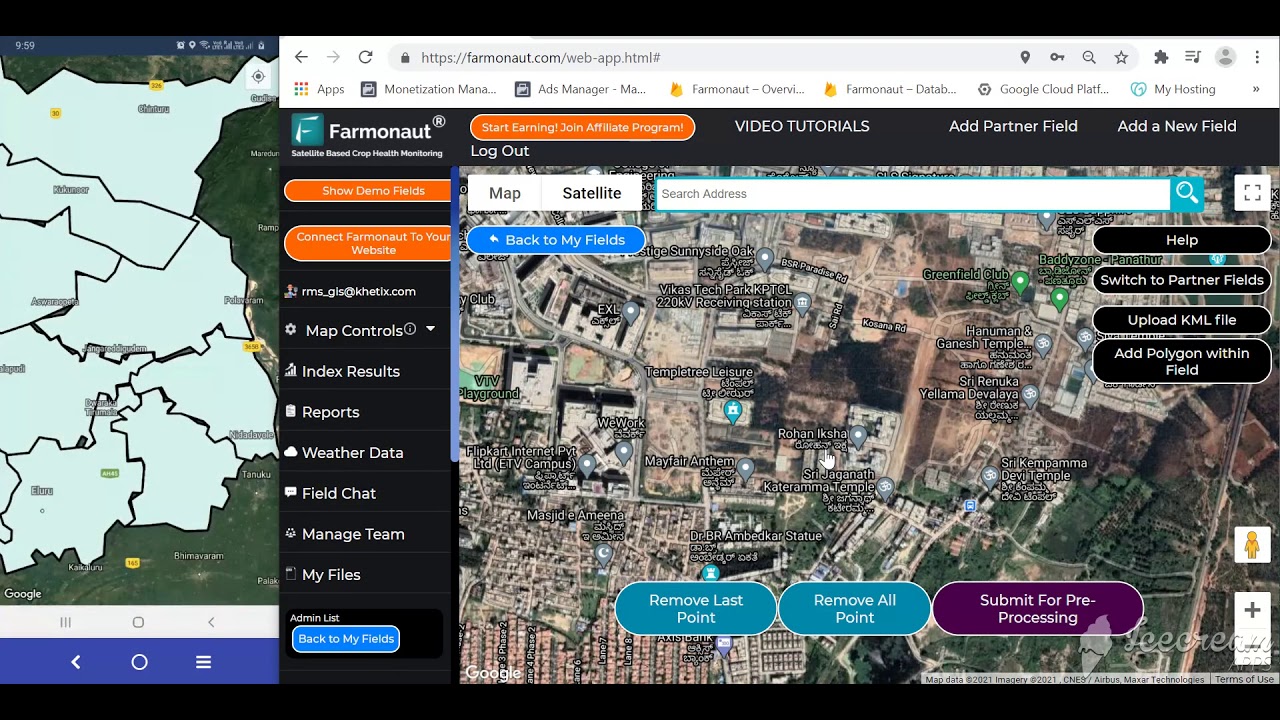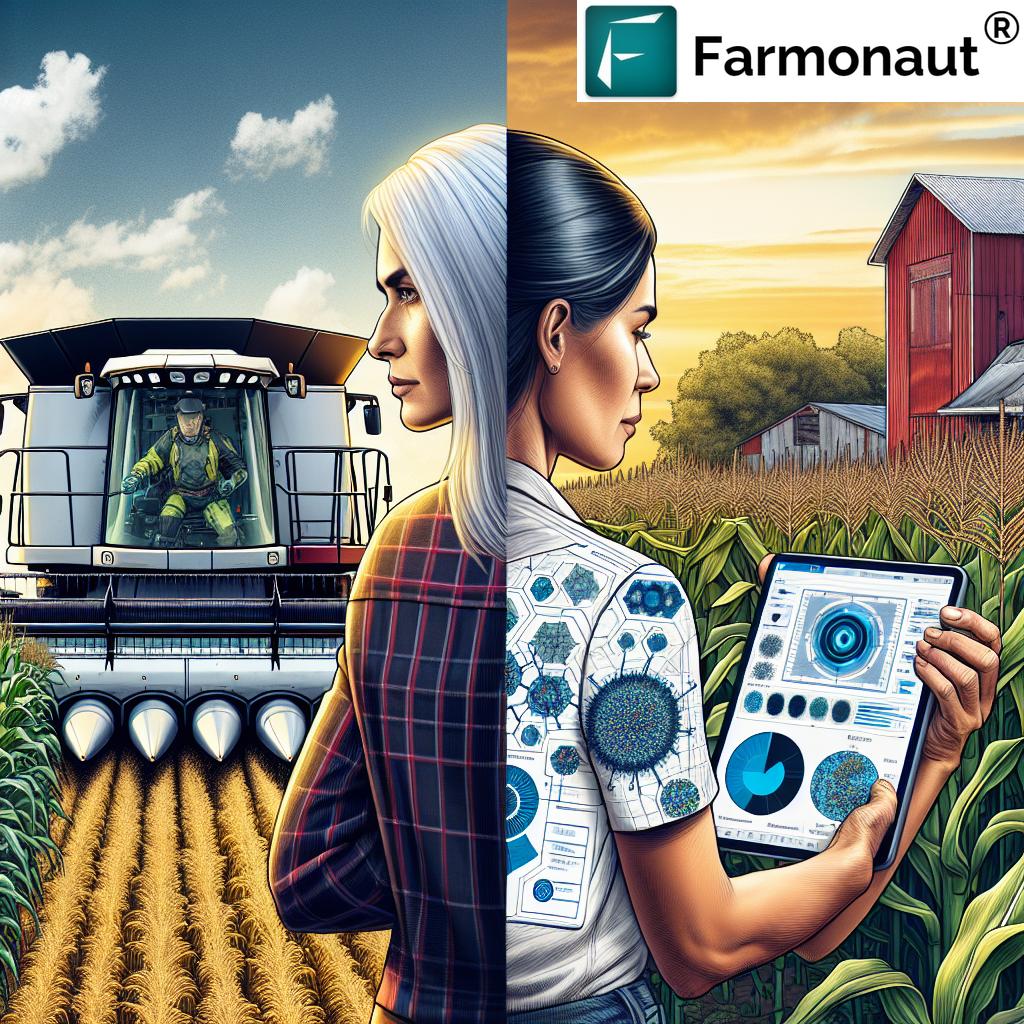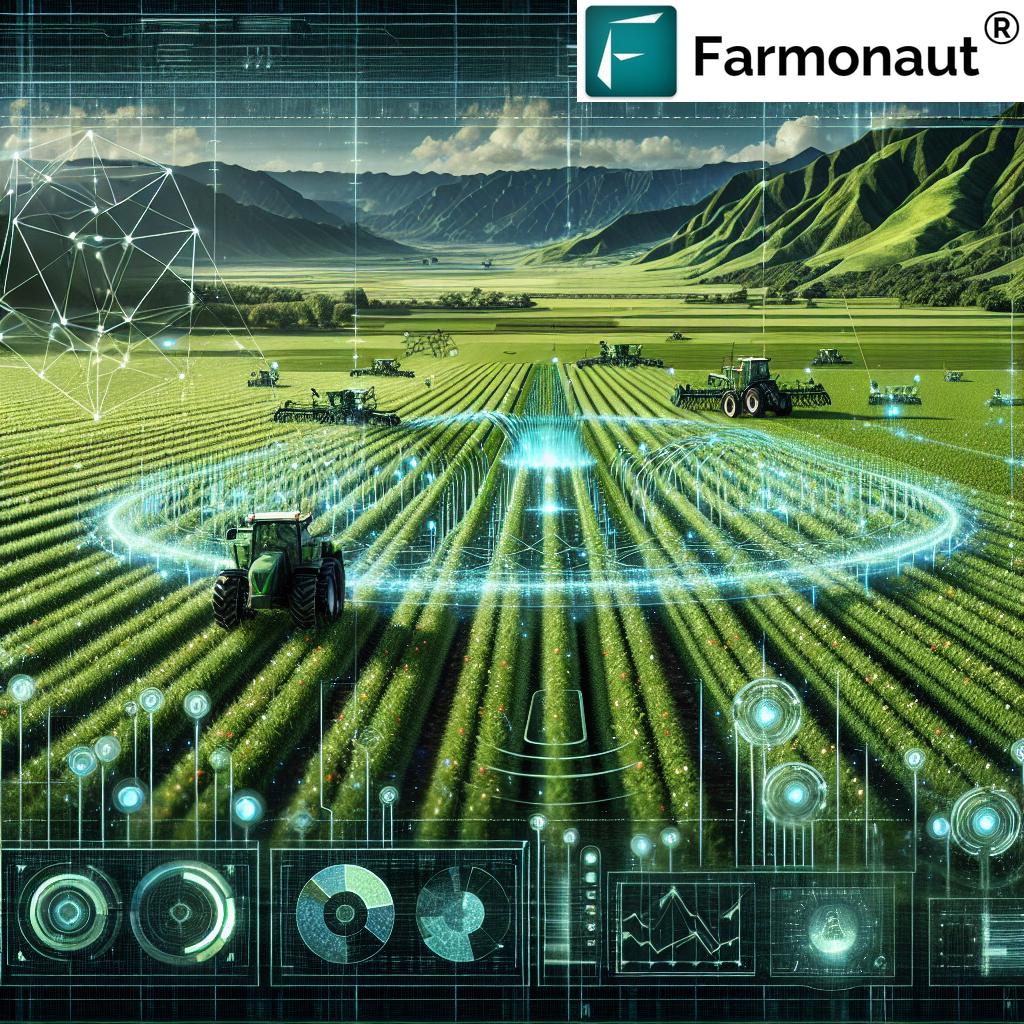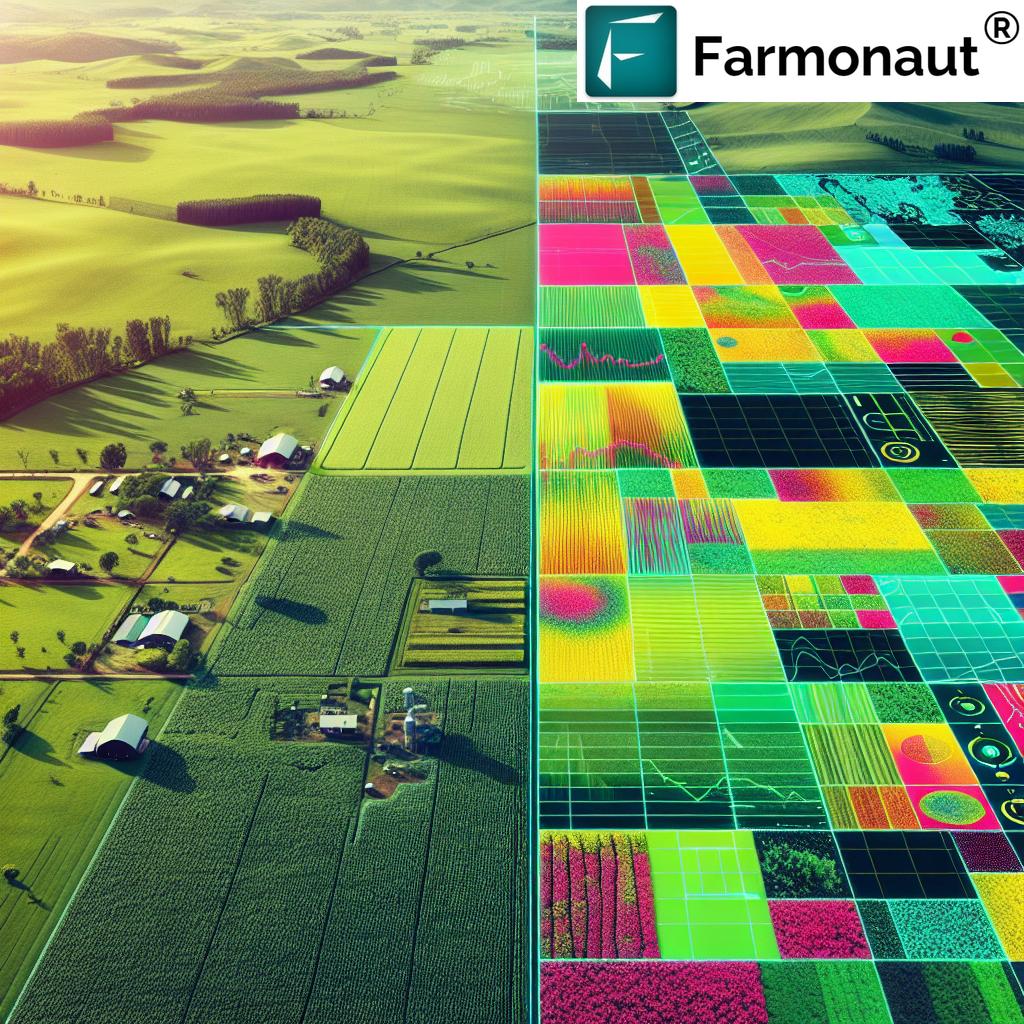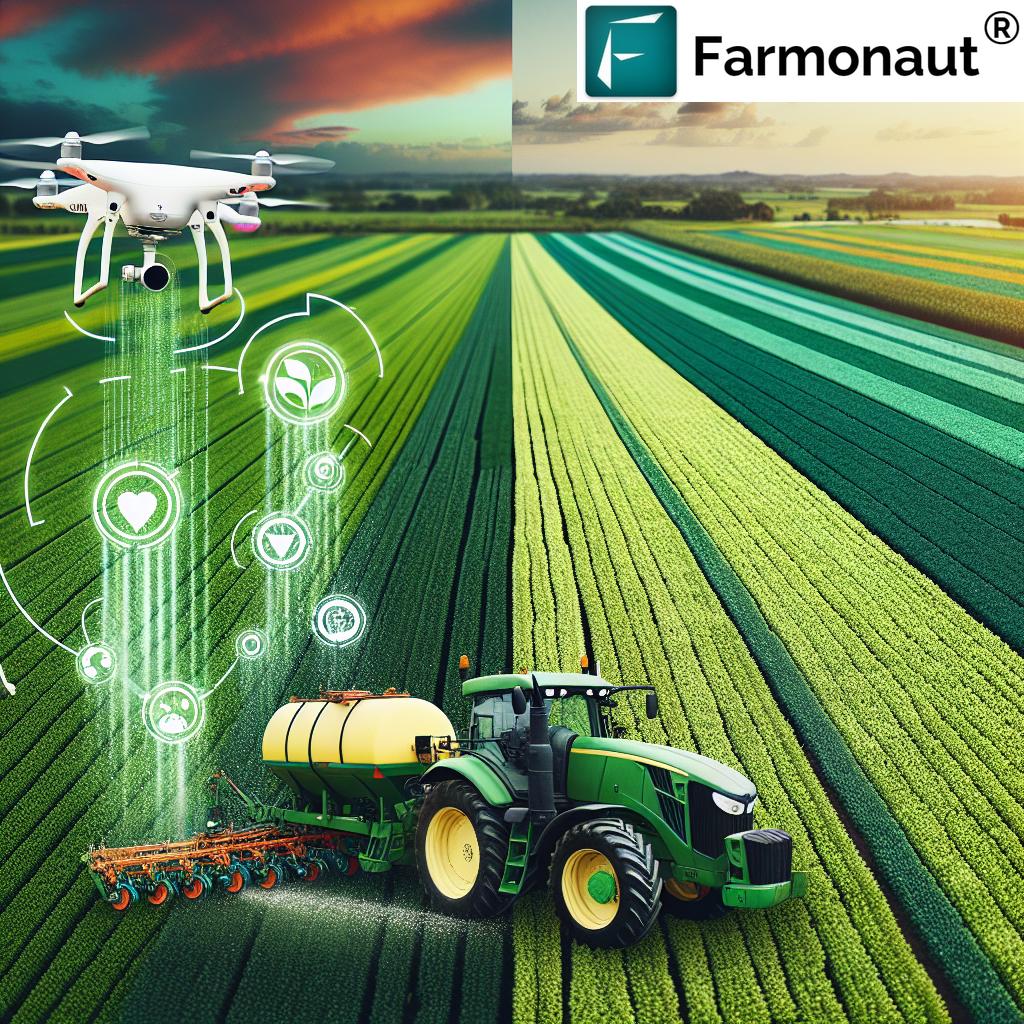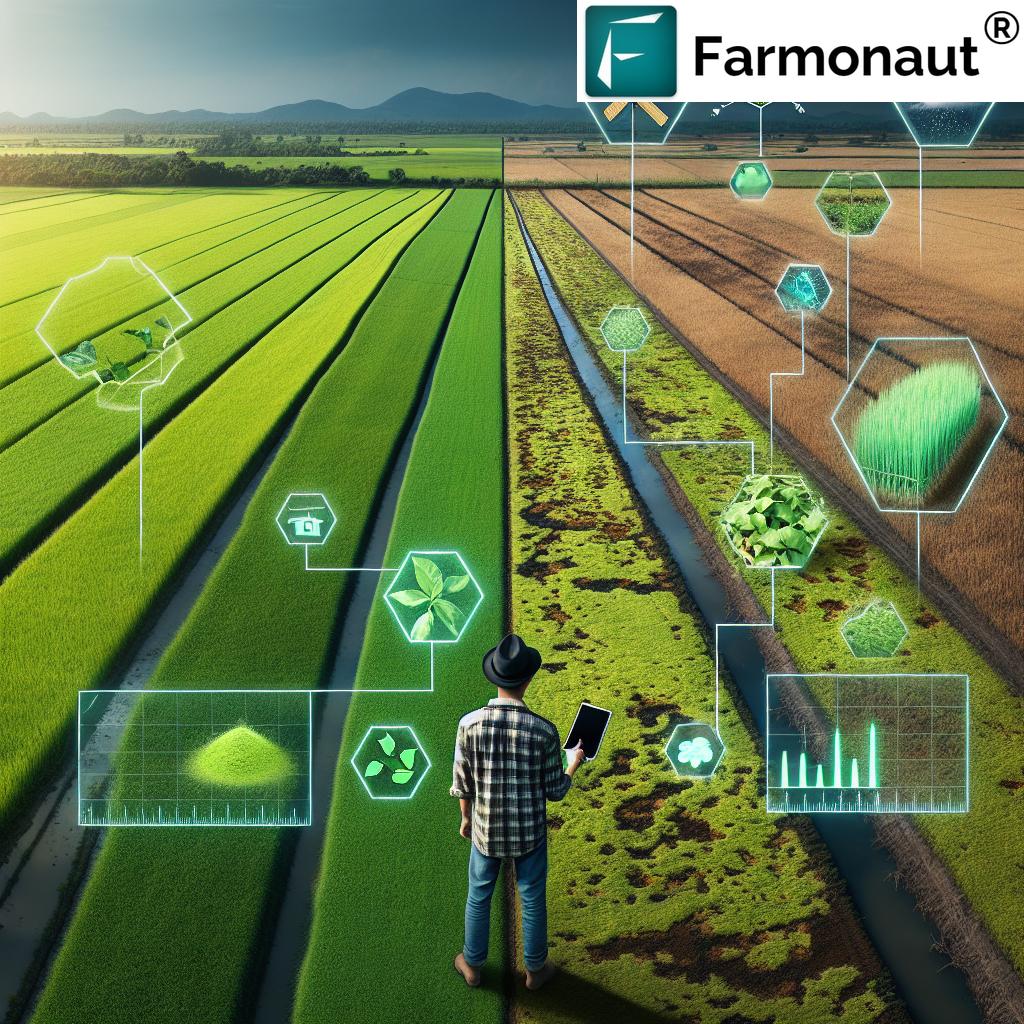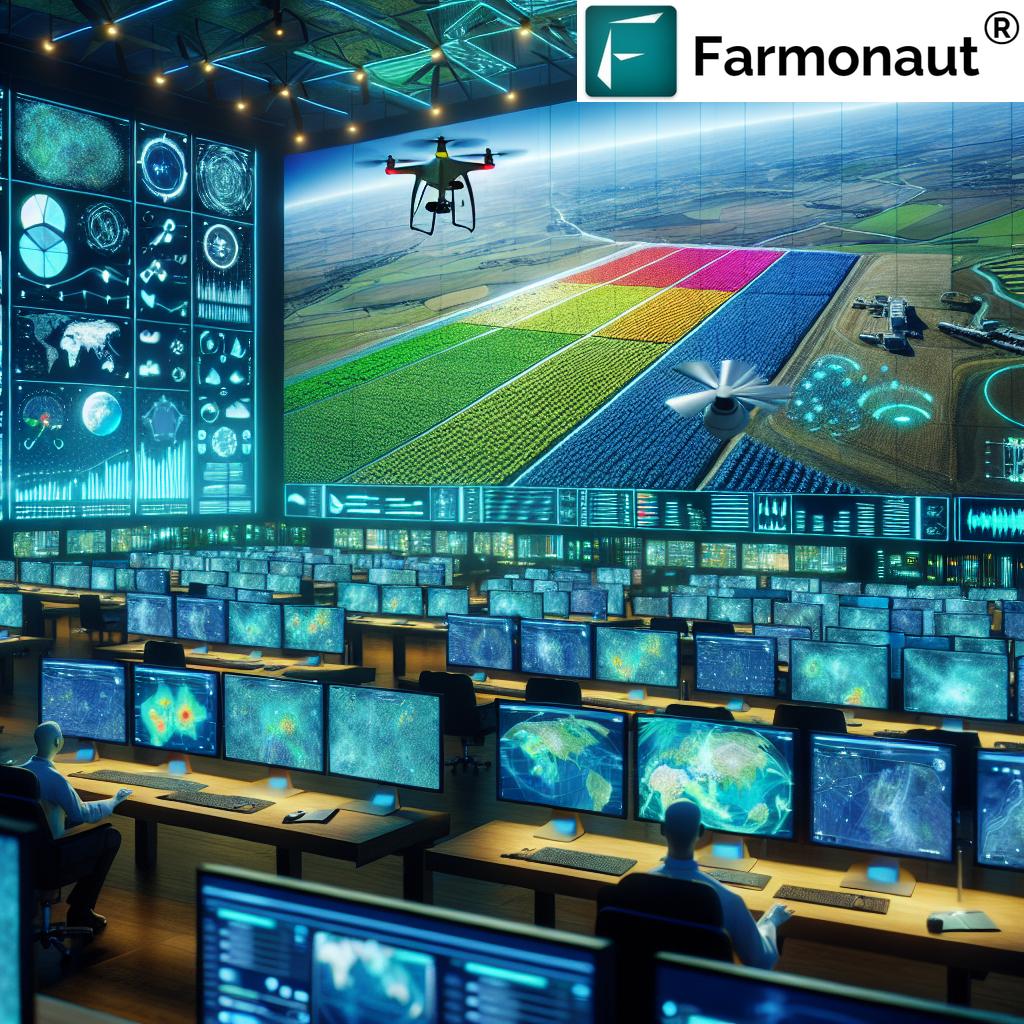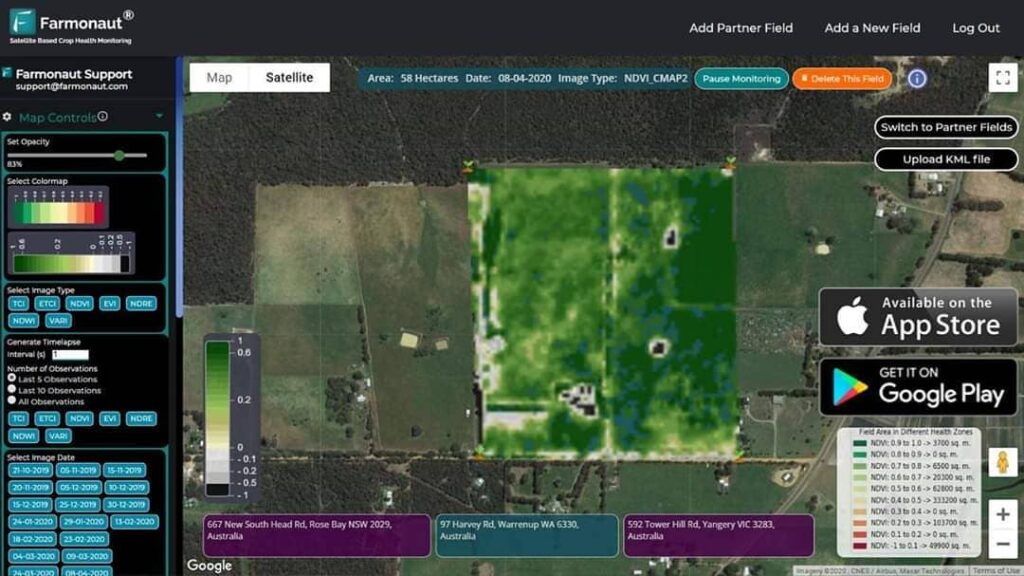What Is Precision Irrigation? 5 Ways It Improves Crops
“Precision irrigation can reduce water usage by up to 50% while maintaining or increasing crop yields.”
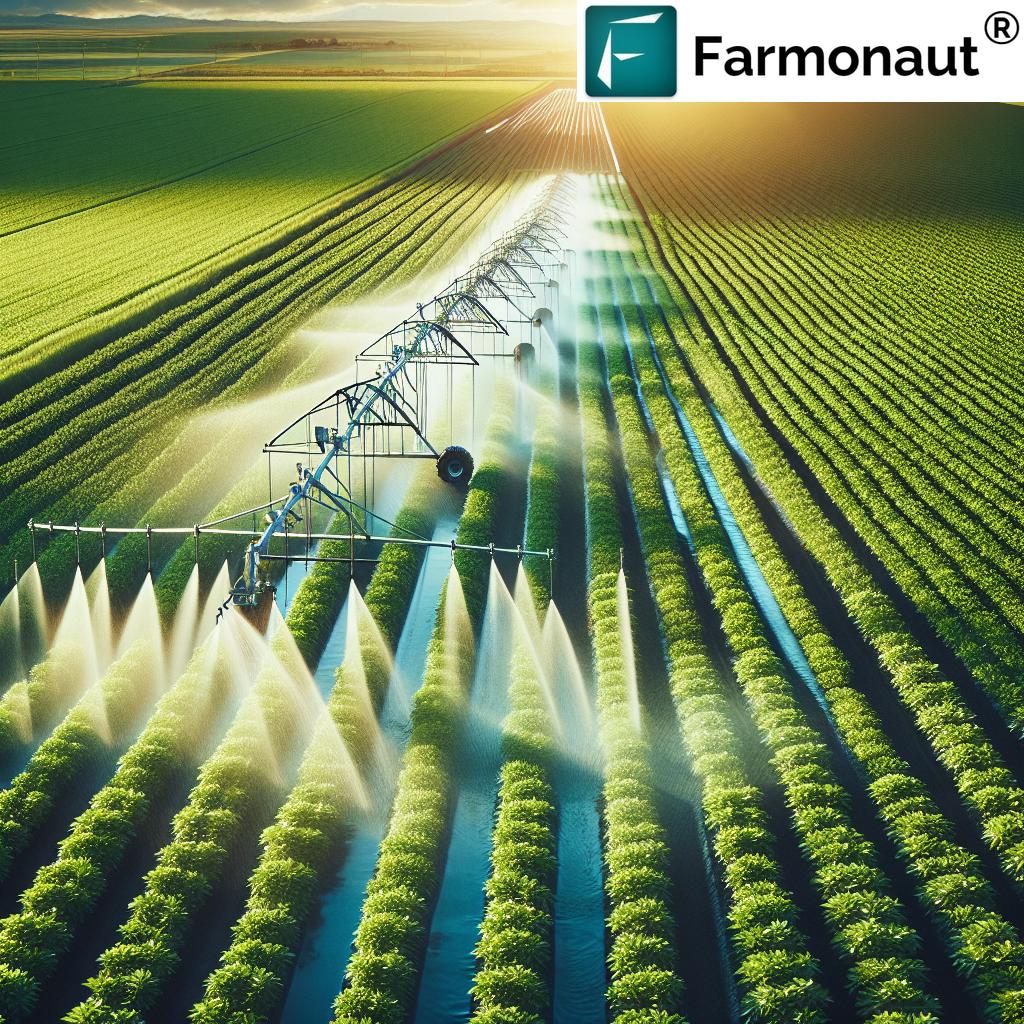
As we step deeper into the era of smart farming, precision irrigation emerges as a cornerstone innovation for maximizing crop yields, managing resources sustainably, and securing global food security.
We, as modern farmers, agribusinesses, and agricultural technologists, are always searching for ways to optimize water usage, improve crop health, and reduce operational costs.
Precision irrigation, with its suite of advanced technologies—including soil moisture sensors, automated irrigation systems, IoT-enabled devices, and agricultural analytics platforms—holds the key to unlocking future-ready, sustainable farming practices.
Understanding Precision Irrigation: The Basics of Optimized Water Distribution
At its core, precision irrigation refers to the agricultural practice of delivering the exact amount of water required by a crop, at the ideal time and location. Rather than relying on traditional, uniform irrigation methods, we leverage advanced sensors, smart analytics platforms, and automated irrigation technology to monitor, measure, and optimize water usage for every plant, zone, or field.
The main components that enable this transformative technique include:
- Sensors: Devices to measure soil moisture, temperature, environmental conditions, and even plant leaf moisture and stress levels.
- Data Analytics: Software and analytics platforms that process raw sensor information to create actionable insights and irrigation schedules.
- Automated Systems: Equipment that translates these insights into real-world actions by adjusting water delivery automatically.
- IoT Integration: Linking all devices, sensors, and irrigation systems for seamless data flow and automated response to changing field or plant conditions.
By integrating these advanced elements, we now have unparalleled control over water distribution, enabling smarter decisions that support both environmental sustainability and commercial success.
Jump to Frequently Asked Questions
Technologies Driving Precision Irrigation Systems
Unlocking the full potential of modern irrigation systems requires a blend of cutting-edge technologies and field-proven methodologies. By integrating sensor data, real-time analytics, automation, and aerial scouting, we transform ordinary farms into smart agricultural operations. Let’s explore the most impactful technological drivers behind precision irrigation today:
-
Soil Moisture Sensors
Soil moisture sensors are vital devices that continuously measure the moisture levels in different zones of a field. Placed at varying depths, these sensors help us understand where water is abundant, lacking, or just right—enabling targeted irrigation rather than a one-size-fits-all approach.
- Leaf sensors provide an additional layer of crop health monitoring, signaling water stress as it manifests.
- Integration with analytics software helps us generate alerts or automatically adjust watering schedules.
-
Unmanned Aerial Vehicles (UAVs) & Drones
Drones and UAVs equipped with multispectral cameras are revolutionizing the aerial monitoring of crops. They capture high-resolution images that reveal detailed insights into moisture levels, plant health, and field variability.
- Drone-based crop monitoring detects problem areas before they affect yields.
- Early intervention with targeted irrigation improves uniform water distribution and plant growth.
-
Internet of Things (IoT) Integration
By connecting sensors, weather stations, actuators, and irrigation equipment through the Internet of Things (IoT), we enable seamless communication and automation. This integration brings real-time environmental and agronomic data together, so our systems can adjust instantly and intelligently.
- IoT irrigation devices minimize manual labor and reduce the risk of human error.
- Cloud-based monitoring platforms provide insights for both on-site and remote farm management.
-
Machine Learning and Artificial Intelligence
Advanced analytics driven by AI and machine learning turn terabytes of raw sensor and satellite data into actionable insights. By learning from historical data and current conditions, these systems can predict optimal irrigation schedules and preempt water waste.
- Algorithms forecast crop water needs based on environmental changes, seasonality, and weather trends.
- AI-based platforms continually self-improve, increasing system efficiency year after year.
For seamless integration of satellite and weather data into your custom smart irrigation solutions, explore:
5 Ways Precision Irrigation Systems Improve Crops & Yields
The adoption of precision irrigation systems comes with transformative payoffs for us as farmers, agribusiness managers, and agricultural stakeholders. Here are the five most profound ways these systems drive significant improvements in crop output, field management, and sustainability:
-
1. Water Conservation in Agriculture
By delivering water only where and when it’s needed, precision irrigation dramatically reduces water waste. Automated control, optimized schedules, and targeted distribution can cut water consumption by up to 50%, ensuring farms stay productive even in drought-prone or water-scarce regions.
-
2. Improved Crop Health Monitoring & Plant Growth
Consistent, precise watering encourages robust root development and optimal nutrient uptake. Soil moisture sensors and AI-driven analytics help us spot early signs of water stress and deploy corrective measures, ensuring every plant achieves its genetic potential for maximum yields and health.
-
3. Cost Savings & Input Efficiency
By minimizing water waste and reducing the energy cost of pumping and distributing irrigation water, we lower recurring operational expenses. Precision irrigation also makes the use of fertilizers and pesticides more targeted, lowering input costs and increasing profitability.
-
4. Sustainability and Environmental Impact
Efficient water distribution means less runoff and minimized leaching of nutrients or chemicals into local water bodies. This enhances sustainable farming practices by safeguarding vital resources for future generations.
For growers seeking to track and reduce on-farm carbon emissions, Farmonaut offers carbon footprint monitoring tools—an essential step toward truly sustainable agriculture.
-
5. Maximized Yields & Crop Quality
With every crop receiving optimized care, we experience uniform growth, less disease pressure, and higher quality produce. Whether the outcome is yield quantity or premium product quality, the combination of smart irrigation solutions and precision crop management translates directly into better returns for every hectare farmed.
“Soil moisture sensors enable farmers to optimize irrigation, boosting crop productivity by as much as 20%.”
Comparative Benefit Table: 5 Precision Irrigation Methods
This table highlights the impact of different precision irrigation techniques on water savings, crop yield improvement, system complexity, and sustainability. Use this as your quick-reference guide when selecting the best solution for your farm or agribusiness.
| Method | Estimated Water Savings (%) | Estimated Yield Improvement (%) | Implementation Complexity | Sustainability Impact |
|---|---|---|---|---|
| Drip Irrigation | 30–50% | 10–20% | Medium | High |
| Sprinkler Systems | 10–30% | 5–15% | Medium | Medium |
| Soil Moisture Sensors | 15–35% | 10–20% | Low–Medium | High |
| Smart Analytics & Automated Irrigation Technology | 30–55% | 15–25% | High | High |
| Drone-based Crop Monitoring | 10–25% | 10–15% | Medium–High | Medium–High |
Implementing Precision Irrigation Solutions on the Farm
Making the transition to precision irrigation doesn’t have to be overwhelming. By following a structured approach, farmers and agribusinesses can maximize returns from technology-driven irrigation systems while minimizing risks.
- Assessing Field Variability: Identify variations in soil type, topography, and microclimate within your fields to tailor irrigation strategies.
- Selecting Technologies: Choose from soil moisture sensors, aerial monitoring devices (like drones), automated irrigation equipment, and IoT-enabled systems based on your unique needs.
- Training and Support: Invest in ongoing staff education for installation, calibration, and maintenance—not only for hardware, but also for analytics platforms and data management tools.
- Continuous Monitoring & Adjustment: Use analytics software to monitor real-time conditions, update system parameters, and adapt to seasonal, environmental, or plant stress changes.
Farmonaut: Making Precision Agriculture Affordable & Data-driven

To make precision irrigation and advanced farm management accessible for everyone, Farmonaut offers satellite-based farm monitoring solutions via web apps, iOS & Android smartphones, and direct-to-developer APIs.
Our mission is to empower farmers—from smallholders in rural communities to global agribusinesses—with affordable, actionable data and next-generation tools:
- Real-time crop health monitoring via multispectral satellite imagery, supporting targeted irrigation and rapid diagnostics for diseases, pests, or nutrient deficiencies.
- AI-driven advisory with personalized irrigation recommendations, weather forecasts, and timely alerts—helping boost yields and resource efficiency.
-
Blockchain-based traceability
Track every stage of your product—from farm to consumer. For premium commodity chains, discover blockchain traceability solutions that build trust and ensure supply chain transparency. - Fleet and resource management: For large farms and agribusinesses, Fleet and resource tracking systems help optimize equipment usage and reduce operational costs. Explore more about Farmonaut Fleet Management for greater ROI.
- Large-scale plantation/advisory: For commercial plantations and forestry projects, access large scale farm management and advisory features.
- Crop loan and insurance: Satellite-verified farm records support efficient crop loan/insurance processing—mitigating fraud risks and improving financial inclusion.
Key Benefits: Precision Irrigation and Smart Analytics for Farmers
With smarter irrigation methods and analytics-driven crop management, farmers worldwide see:
- Up to 50% water savings, reducing pressure on local water sources and lowering irrigation costs.
- Yield increases of 10–25%, even in resource-constrained settings, thanks to uniform growth and minimal plant stress.
- Lower input use: Less fertilizer and pesticide consumption means greater profitability and a reduced environmental footprint.
- Enhanced resilience against drought and unpredictable climate patterns, safeguarding food security and livelihoods.
- Sustainable farming practices that protect land, water, and air for future generations.
Challenges and Considerations of Adopting Precision Irrigation Technology
- Initial Investment: High upfront costs for installing sensors, automated equipment, or drone-based crop monitoring. However, the long-term cost savings on water, energy, and inputs offset this investment for most operations.
- Technical Complexity: The integration and management of multiple technologies require training and guidance. User-friendly interfaces, comprehensive support, and ongoing education are essential.
- Data Management: Farm data volumes can grow rapidly. Robust analytics platforms and data storage solutions are crucial for extracting signal from the noise and ensuring actionable, timely recommendations.
- Maintenance: Equipment and sensors must be regularly maintained and calibrated for ongoing accuracy in monitoring soil, weather, and crop conditions.
Future Outlook: The Evolution of Precision Irrigation Technology
The next generation of precision irrigation systems promises even greater integration, intelligence, and impact for farmers, fields, and the environment. Key trends to watch include:
- Deeper Weather and Climate Integration: Linking irrigation schedules to seasonal climate forecasts and real-time weather station data for maximum adaptability and yield stability.
- AI-powered Automation & Robotics: Fully automated robots and field machinery that assess soil and crop needs and apply water (or other resources) 100% autonomously.
- Collaborative Data Platforms: Community-focused apps and platforms for farmers to share insights, learn from aggregated field data, and accelerate local innovation together.
- Real-Time Carbon and Sustainability Monitoring: Farms will soon be able to quantify environmental outcomes and compliance—streamlining sustainability certifications and market access.
Frequently Asked Questions (FAQ)
-
Q: What is precision irrigation?
Precision irrigation is an advanced agricultural practice that uses technology—including sensors, real-time analytics, and automated equipment—to optimize water usage. It ensures each crop receives the right amount of water at the ideal time and location, improving yields, resource efficiency, and sustainability.
-
Q: How do soil moisture sensors improve crop yields?
Soil moisture sensors measure the water content at various depths and locations in the soil, providing accurate, real-time insights. This allows farmers to precisely irrigate when and where needed, minimizing water stress, optimizing plant growth, and boosting productivity by as much as 20%.
-
Q: What role do UAVs and drones play in smart irrigation?
Drones with multispectral cameras capture detailed aerial images, highlighting variations in field moisture, crop health, and stress zones. This enables targeted irrigation and timely intervention—saving resources and improving yields.
-
Q: Is precision irrigation suitable for smallholder farmers?
Absolutely! Cloud-based, satellite-powered platforms like Farmonaut make precision agriculture affordable and accessible even for small and medium farms via mobile apps. Farmers can monitor crop health, get customized irrigation advice, and enjoy the same benefits as large agribusinesses.
-
Q: How does AI enhance irrigation management?
Artificial intelligence and machine learning analyze historical and real-time farm data to create optimal irrigation schedules. AI platforms can also detect hidden trends, predict future water requirements, and deliver timely recommendations for better resource management.
-
Q: What are the main challenges in adopting precision irrigation?
Common challenges include the initial investment in hardware, need for technical training, ongoing equipment maintenance, and efficient management of big data. Many of these challenges can be overcome with user-friendly, subscription-based solutions—and the long-term benefits typically outweigh the costs.
Conclusion: Embracing Sustainable, High-Yield Agriculture with Precision Irrigation
Precision irrigation is more than a method—it’s a paradigm shift for 21st-century farming.
By skillfully combining sensors, automated irrigation technology, smart analytics platforms, and IoT integration, we can conserve water, increase crop yields, strengthen farm profitability, and champion truly sustainable farming practices.
Whether you’re a precision agriculture beginner or a large-scale agribusiness, Farmonaut’s affordable satellite-powered solutions make data-driven farming and smart irrigation a reality—anywhere in the world.
Start reaping the benefits today:
Explore Farmonaut’s Apps or Web Dashboard
Together, let’s unlock a future where every drop of water counts, every hectare is optimized, and sustainable abundance becomes the norm in agriculture!







